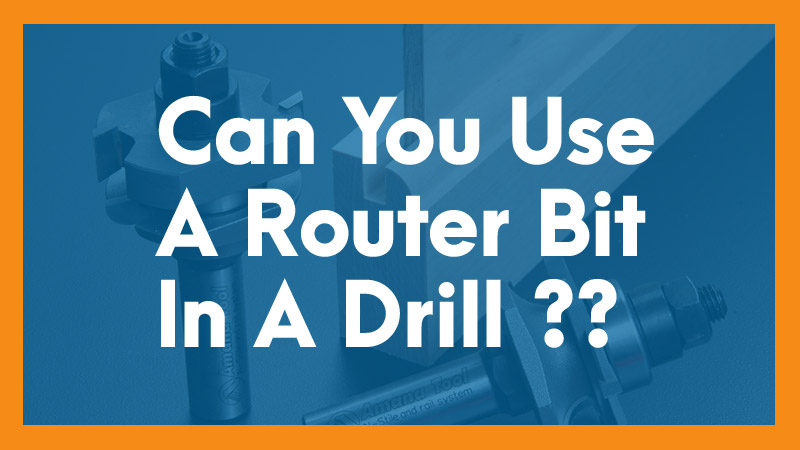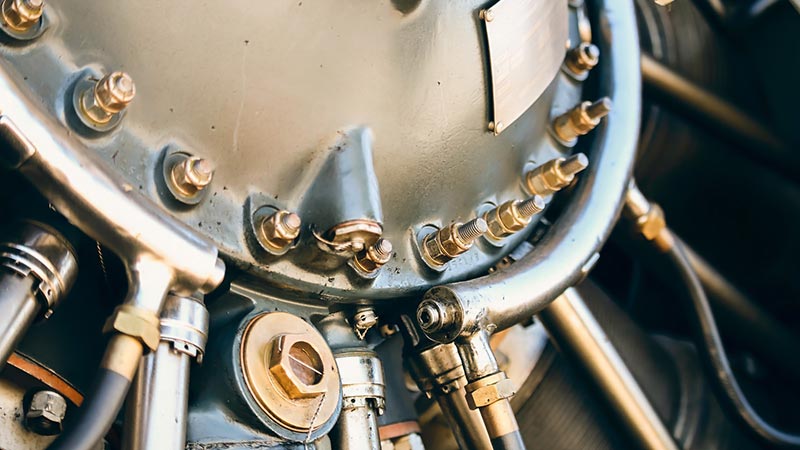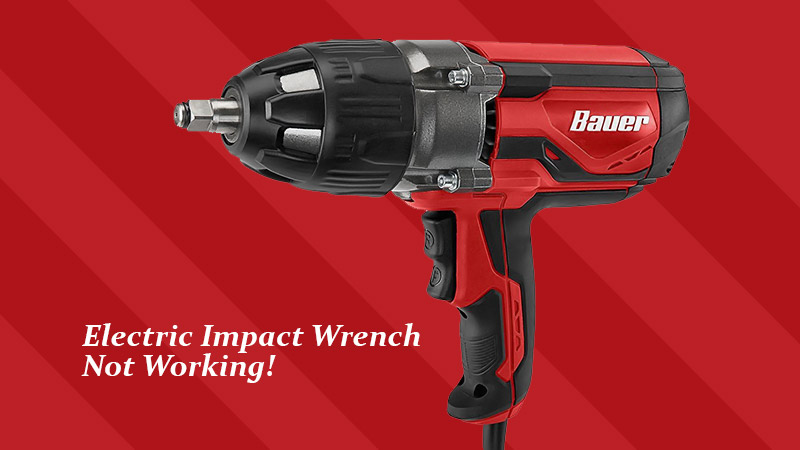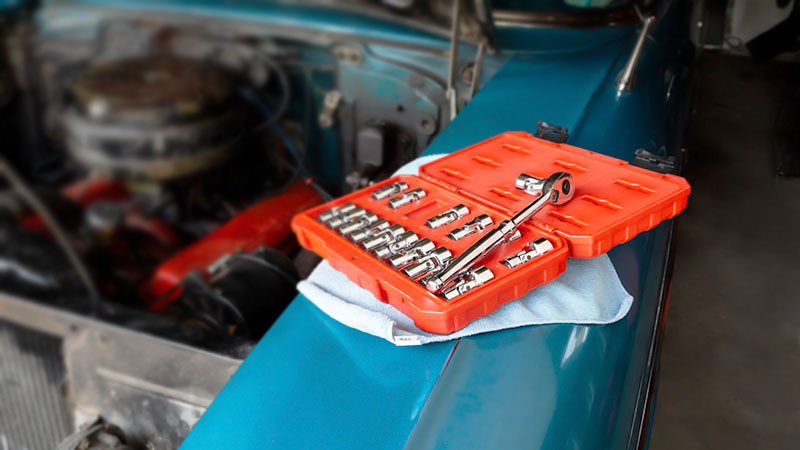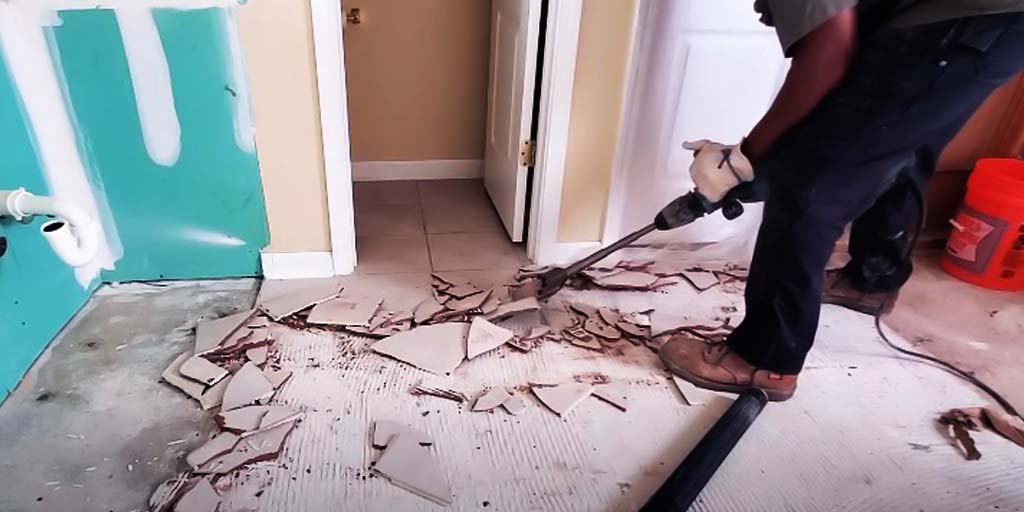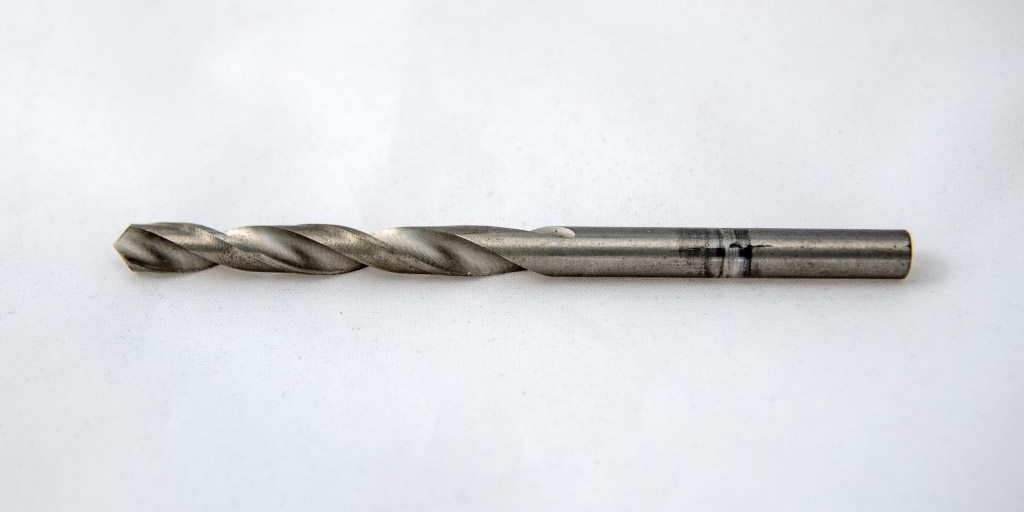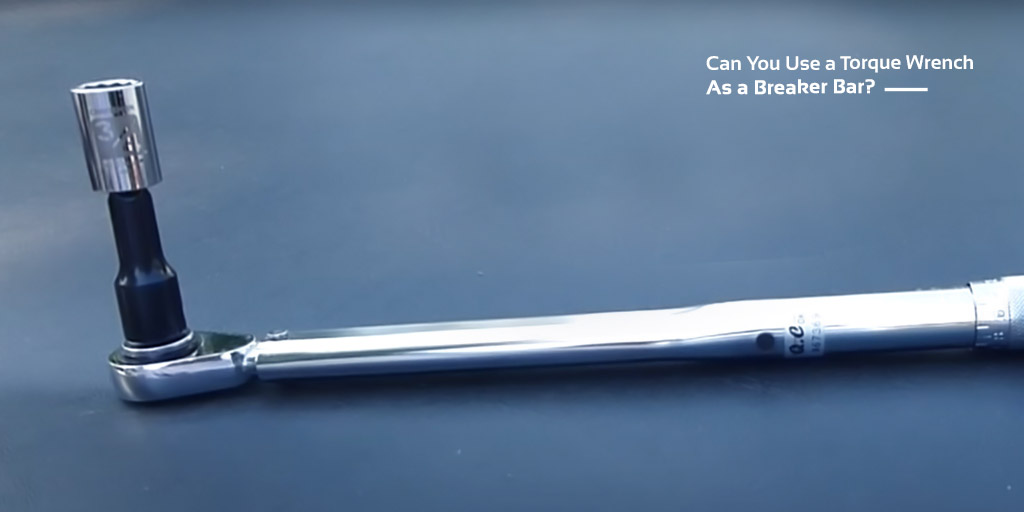As an amazon associate, I earn affiliate commissions from qualifying purchases.
Can You Use An Impact Driver As A Drill? The Answer is Here!
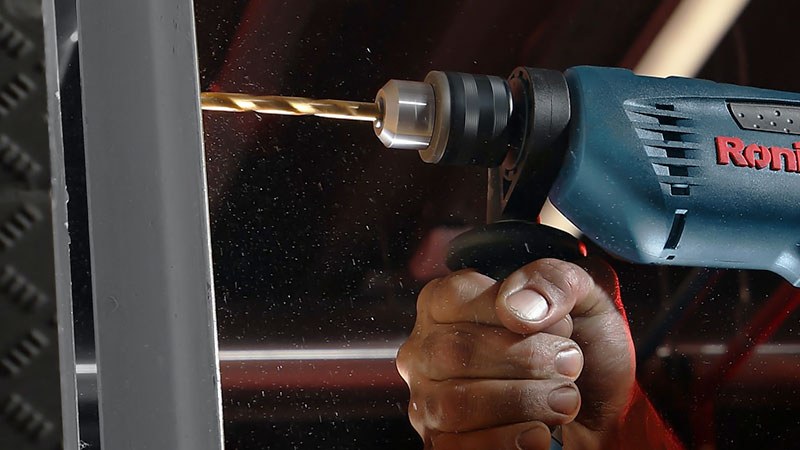
Drilling with an impact driver has become very popular with homeowners. It is known for its convenience and higher driving speed. An impact driver is a small power tool that has an internal hammering mechanism, which makes it very useful for driving screws or fastening items tightly to wood.
However, Are you wondering can you use an impact driver as a drill?
Yes, you can use an impact driver as a drill. But there are many conditions that must be met before you can safely do this. The drill bit is the most important of these conditions. If you choose a drill bit that is too small, the fragile tip of the impact driver drill bit will break. When this happens, you’ll find it very difficult or even impossible to pull the broken piece out of the work surface. Always check the size of your drill bits to make sure they are large enough for use with an impact driver.
In this article, we are going to compare both of these power tools and tell you about the benefits that each one has over the other. We will also show you what accessories that you need for using an impact driver as a drill.
Can You Use An Impact Driver As A Drill?
Yes, it is possible to use an impact driver as a drill. You should use the right accessories for your impact driver in order not to damage your equipment during the work process. There are many factors that you have to consider if you have decided to use it as a drill. Here are some factors which you have to consider:
Size of the Drill Bit: As a drill, you should use the biggest size of the bit as possible for example if your impact driver has 1/4 inch drive size then you can use a 3/4 inch standard drill bit. Do not use much bigger drill bits because your impact driver may not handle it and might damage itself or maybe even break down.
Drill Bit Extension: Drill extensions are helpful when you need to make a hole in an unreachable location. Drill extensions are not necessary for your impact driver but it is advisable to use them if you need to make a hole at an unreachable location or too deep. You can buy them separately or purchase them with drill bits as one product, this will depend on your individual preference, just ensure that the extension does not exceed the maximum diameter size of your impact driver.
Drill Bit Holder: The drill bit holder is useful when you cannot put your drill back in the holder. The most common example is when you are putting screws on a wall or any other flat surface, you have to hold your impact driver at 90 degrees so it can be helpful to use this type of holder. They are really cheap and there is no harm in using them with impact drivers as well.
Socket Adapter: You can use a socket adapter with your impact driver as a drill if you need to tighten nuts and bolts which are hard to access. The socket adapter will allow you to place bolt or other hardware in the proper position while working with it. Be sure that your impact driver has enough power to operate a socket adapter because it needs more power than usual drill drivers.
Chuck Adapter: The best way to have a perfectly secure connection of drill bits with your impact driver is using the chuck adapter. This type of adapter is designed for having screwdrivers bits, nut drivers, and other tools which fit into a standard 1/4 inch hex shank. This way you can use them as an extension on your existing impact driver without making any changes to its hex shank.
Drill Clutch Plate: The drill clutch plate is a very important accessory because it reduces the torque of your impact driver and provides better control over your work which is a must if you are working on close quarter drilling applications. If you are not using a drill clutch plate then use only a little amount of torque to prevent from breaking your screws.
Drill Chuck Arbor: The drill chuck arbor increases the available size of the bit that fits into an impact driver and also enables it to hold a larger shank of screwdriver bits, nut drivers, and other tools which fit into a standard 1/2 inch hex shank. It can be useful when you are going to work with bulky or heavy duty applications. Some impact driver kits come with a standard drill chuck arbor in them which is usually two sizes 1/4 inch and 1/2 inch.
Impact Driver Stand: The stand is a very helpful accessory when you are working on overhead applications. It reduces the chance of dropping your power drill by accidentally slipping out of your hand, or using it in tight places like the ceiling where there is no room for regular drills.
Finally, with all these accessories you can work on almost any project without worrying about the size of the drill bit, how far it is away from your power tool or whether you have the right extension for reaching difficult places without hurting your back. These add-ons will help you to optimize the use of impact drivers and also give your more control over your tools which always help you to get the job done correctly, quickly, and efficiently.
How To Use An Impact Driver As A Drill?
To use an impact driver as a drill, you have first understand the basic concept of changing the setting on your machine so that it functions accordingly. The process of switching from an impact driver function to a drill function is very simple, even if you are not aware of how to do it.
If you have a reversible feature on your drill, then you can easily switch levers from one end to another. In case you don’t have this option, then remove the keyless chuck and attach it back when required. Once done, insert a drill bit similar to how the chuck would be inserted and lock it in place with its keyless chuck.
In order to ensure proper functionality during anyone of these two tasks, adjust the setting for speed control in accordance with your requirement or task at hand before starting off. If you over speed the machine while using as a screwdriver, it will not last long but if you under-speed it while being used as a drill, then there is no miracle that will happen except frustration. It works fine when applying normal pressure and speed.
What To Remember?
There are a few things that you need to consider before using an impact driver as a drill. First, the torque settings on your machine should be reduced for both functions of impact driver and drill. If you fail to do this, then it will result in overheating of the motor and hence reduce its life span significantly.
Second, if you want to use an impact driver as a drill then apply normal pressure only, because applying an excessive amount of downward pressure can cause damage to your internal components including gears and pistons etc.
Finally, if your device has an adjustable clutch setting, then adjust them accordingly and keep them safe from any kind of damage caused due to misplacing the clutch setting.
What To Avoid?
There are a few precautions that you need to follow before inputting your machine as a drill or as an impact driver. If you have selected the setting for the “drill” function, then do not apply pressure from any side except under the handle where it is present. Using force from other sides can reduce its life span because it can result in damage caused due to misplacing of the gears and pistons etc.
Also, never use this equipment as a hammer while being used as a drill action. It will cause unnecessary damage to your machine because there is no clutch present on these drills that stop its spinning motion when an excessive amount of downward pressure is applied by mistake during either of the two functions.
What Are The Differences Between An Impact Driver And A Drill?
These are both great tools. They both may be used for several projects, and they both may remove screws with ease. You will need to make a choice between the two when you try to decide which one may work best for your next project. There are a few differences between these two tools. If you would like to know the differences, keep reading below.
Uses: An impact driver is designed to work with screws that are difficult or impossible for a drill to remove. This tool can be used when sockets are needed for the job.
A drill can also be used to remove screws, but it does not work as well as an impact driver or cordless drill when sockets are needed for the job.
Battery: An impact driver must be plugged into an outlet before it can be used. This tool can be used to remove screws or other items that are difficult to remove. It can be plugged in so that it may have access to enough power for the job.
A drill does not need to be plugged into an outlet before it can be used. This is a cordless tool that may be used to remove screws. It does not need to be plugged into an outlet before it can be used, but it may have to be charged after each use.
Speed: An impact driver is designed to rotate at a low speed as the bit or screwdriver will slip and then suddenly tighten up when it is needed for precision work.
A drill rotates at a high speed. This means that the drill will usually rotate when the trigger is pulled. The drill may be stopped when it is needed for precision work, but it will not rotate for this job.
Driving torque: An impact driver offers less torque than a drill. This means that it may have problems when screws are being used in hardwood or other stronger surfaces.
A drill offers more torque than an impact driver. This means that the drill may have problems when it is used for smaller screws. The size of the screw may limit the amount of torque that can be used to remove the screws.
Weight: An impact driver is a lightweight tool, but it will still be heavier than a drill. This means that you may have to use less pressure when using an impact driver so that it does not break the screws or the material being used.
A drill is lighter than an impact driver. This means that you may have to use more pressure when using a drill so that it does not break the screws or other items being used.
Cost: An impact driver is a more expensive tool than a drill, and it is usually more of an investment. This tool is used by those who work on construction sites, and it is used for professional jobs.
A drill is a less expensive tool than an impact driver, and it is designed for those who work on small projects. This tool can be used with ease, but it may not last as long as an impact driver.
Noise: An impact driver is a quieter tool than a drill. This means that it may be used when you have to use the tools for several hours during the day.
A drill is a louder tool than an impact driver. This means that it may be used when you are looking for a tool that is louder or when you are working in an area where you cannot be too loud.
Design: An impact driver is shorter than a drill. It does not have the long barrel that you will find on a drill. You may rest this tool against your body when using it for long periods of time.
A drill is taller than an impact driver, and it does have the long barrel that you will find on a drill. You cannot rest this tool against your body when using it for long periods of time.
These are just a few of the main differences between an impact driver and a drill. Both tools can be used for certain jobs, but you will benefit from using one over the other. The cost and use of these tools will determine which should be used during the job to make it easier and faster.
When Should You Use An Impact Driver?
The impact driver is the best power tool for installing screws. It can help you speed up your work and reduce costs in the long run. It is perfect for driving screws into any hard surface like wood, plastic or metal.
Impact drivers feature low-speed high-torque and multiple speeds to meet every type of application requirement. They give a good user experience due to their compact size and lightweight design which makes them easier to handle even in tight spaces where other drills may not fit.
However, impact drivers are not as useful for drilling holes. You should use a top quality drill machine instead. Here are some simple examples of when you should use an impact driver.
When working with steel or metal:
Impact drivers are very effective for driving screws into any hard surfaces like wood, metal or plastic but they don’t work well on soft surfaces like drywall because their bits bounce off too easily. But if you want to drill holes in hard surfaces like metal, there is no better option than impact drivers.
For use in low-light, awkward or dirty places:
Impact drivers are made of high quality materials and they don’t get scratches on the surface. So you can easily hold them with a hand while drilling in tight spaces where other drills might not fit. They also have good lights attached to them to ease up your working conditions even when there is no proper lighting set up around you.
When driving long screws into wood:
Screws that are driven into wood generate less friction than screws driven into metal because the threads of a screw for wooden objects are designed differently from those of metal screws. In order to reduce this friction, impact drivers have been introduced which allow reducing time required for installing long screws.
For hanging drywall:
Drywall screws are difficult to install because they need a high torque impact. An impact driver provides good power for installing long screws without stripping or breaking them. With an impact driver, you will be able to complete the job faster and there is no need of changing bits every time when the screw head strips off. Impacts are made with an oblique angle that can fit into any screw type so simply hold it in place while it’s spinning to drive in your screw quickly without having to stop and go back again.
When you have to install bolts in tight spaces:
Impact drivers are great for dealing with tough bolts because they give enough pressure required for tightening bolts perfectly. It also reduces the risk of stripping the bolt head and breaking your screwdriver bits.
For low-torque work:
Impact drivers use a rotating mass to generate high speeds and torque so they do not require much power from the user, which is perfect for low-torque applications like toys and appliances where you don’t want to loosen up screws more than required. Impact drivers are also perfect for assembling furniture like cabinets, bookshelves, etc because they allow tightening screws more tightly than traditional drill or driver bits.
To save time:
Impact drivers give you more control over your drill with less kickback while drilling holes in material like metal or wood and since they make short work of driving screws, you can save a lot of time with an impact driver.
How to Use An Impact Driver As a Beginner
Using an impact driver is actually pretty easy once you get the hang of it. If you’re not familiar with an impact driver, all an impact driver does is drive screws and fasteners much faster than a typical drill or screwdriver. Now you can learn how to use an impact driver.
#Step 1: To begin, make sure that you have an impact driver properly plugged into a power source. Some jobs require the use of more than one battery pack, so it is important to know which battery powers which tool.
#Step 2: Set your impact driver down on a surface that won’t move or be damaged if it gets hit by falling fasteners or screws. The manufacturers usually recommend using a work surface that is made from wood, but I prefer to use a rubber mat because it also prevents the impact driver from slipping while in use.
#Step 3: Pick up a fastener with one hand and the impact driver with the other. Beginners should always start with screws because they are easier to drive and less likely to cause mistakes on your part.
#Step 4: Insert the screw into the impact driver and tighten your grip on both items to keep them steady. Make sure that you insert the fastener in straight because an impact driver will not drive a crooked fastener; they’ll simply spin in place and make it difficult for you to use your tool properly.
#Step 5: This next step is where things get a bit tricky, but once you get used to using an impact driver it’s easy enough even if you’ve never done it before. While gripping the screwdriver and firmly holding onto the impact driver itself, pull the trigger on your new power tool. If your RPMs are set high enough, this should cause your impact driver to spin up quickly.
#Step 6: Continue to pull the trigger until your screw is completely driven through its intended material. With any luck, you’ll have successfully used an impact driver without any major problems or mistakes!
I’m sure that you will now be able to use an impact driver safely and easily at home, work or wherever it’s needed most. Remember that if you are not comfortable with how to use your impact driver, practice makes perfect so keep at it!
Final Words
I hope that this article will help you to understand the difference between impact driver vs drill. You can use an impact driver as a drill. If you want to do more detailed work, then I think that it’s better for you to use an impact driver.

